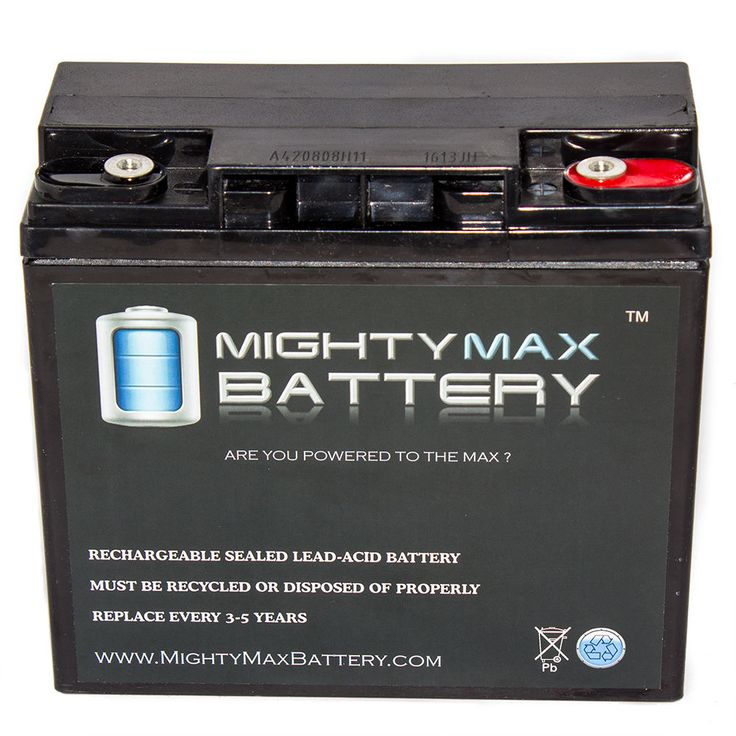Most people have some kind of drawer full of junk, and in almost all of those drawers you'll find a dead battery or two.
But luckily, in many places you can now actually throw those used AAAs into the trash. You can also recycle them at tons of locations across the country.
Here's how to know if you can toss those batteries or not.
First, it depends on what kind of battery you're trying to get rid of.
Car batteries, and any other type of large, lead-acid battery, can't go in your household trash or recycling. This should be obvious once you hear "lead" and "acid" — two things that shouldn't be released into the environment willy-nilly.
The good news is that 98% of lead acid batteries are being recycled already, according to the US Environmental Protection Agency. You can look up where to dispose of car and other lead-acid batteries on Earth911.
No rechargeable batteries should go in the trash, either. They almost always contain nickel cadmium, which according to the EPA can leach into the soil, water and air in landfills or incinerators. The package should warn you that you have to take the rechargeable batteries to a collection site.
The batteries in electronics like cell phones increasingly cannot be thrown away, though this mandate varies by state. Look for an e-waste disposal site for these, or donate them.
But for regular batteries that power our remotes and toys, the question is a little trickier to answer. And they're a big sector, too: Americans purchase over 3 billion dry-cell batteries a year, according to the University of Illinois at Urbana-Champaign.
You've probably heard that you were never supposed to throw away AA, AAA, or other letter-named batteries. This was because in the past, they were made from harmful heavy metals like mercury, lead, cadmium, and nickel.
But many companies started removing these ingredients from their products in the early 1990s, and the 1996 Battery Act meant they all had to phase out mercury, so the batteries we use today are safer to throw directly into the trash.
Duracell says its household batteries are made of steel, zinc, and manganese, and can be thrown away in your normal trash.
But this recommendation can differ from what local governments say, which is who you really should look it up.
NYC, for example, says you can throw away alkaline batteries with the household trash, while California classifies all batteries as "hazardous waste." San Francisco recommends putting them in their own bag or in a collection bin provided by your apartment building.
And while many people can now throw their batteries into the trash, they can also be recycled into tons of different things — from cement to new batteries — so you should drop them off at collection sites so they aren't wasted. Earth911 has a search tool for that, too.
Earth911 has a search tool for that, too.
No matter what you decide to do with your regular batteries, make sure you tape the ends, because they could have a little spark left and start a fire if they come into contact with other batteries.
Sealed lead acid batteries have been around for nearly 160 years. They are an inexpensive and reliable source of power typically used in motorcycles, ATVs, boats, mobility devices, backup power systems and more. With proper care and maintenance, they last for years, but eventually they stop taking a charge and won’t provide the needed power.
When you get a new SLA battery installed, what do you do with the old one? In many states in the United States it is illegal to throw it in the trash. A spent lead acid battery, regardless of whether it is a regular SLA battery, an AGM (absorbed glass mat) or Gel cell, is considered hazardous waste.
The battery can be recycled.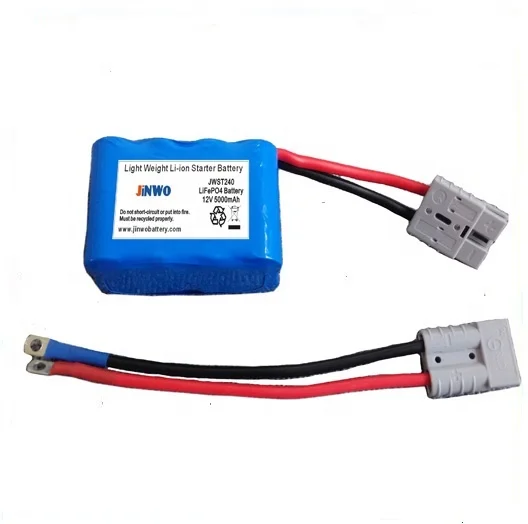 It will be taken apart, and its components can be re-used in new batteries, or neutralized and put back into the environment.
It will be taken apart, and its components can be re-used in new batteries, or neutralized and put back into the environment.
The first step is to remove the acid from the batteries. Then the batteries are broken into small bits in a hammer mill. The broken pieces are dumped into large vats of water. There, the plastic rises to the surface and the lead and other metals sink to the bottom.
Now that the parts are separated, they each go through a different recycling process. The plastic used for battery cases is typically polypropylene. That is melted down, put through an extruder, and turned into uniformly sized pellets. The pellets can then be sold to other manufacturers, although typically they will be sold to battery case manufacturers to be reused in manufacturing new batteries.
The lead in the battery is infinitely recyclable. That means it can be used over and over without loss of performance. The lead parts are cleaned and melted together in smelting furnaces.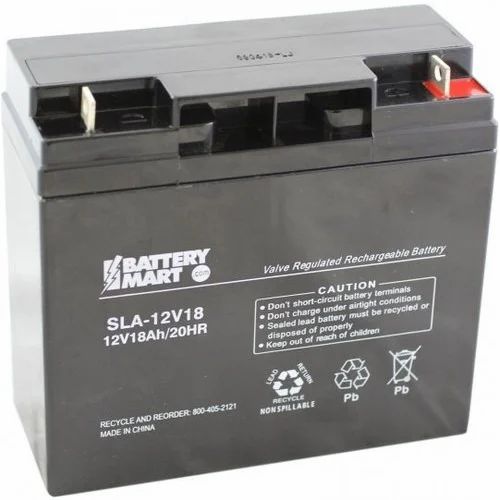 The molten lead is poured into molds to create either 2000 lb ingots called hogs, or 65 lb ingots called pigs. Any impurities in the lead rise to the surface and are scraped off before the lead cools. Once cool, the ingots are removed from the molds and sent to battery manufacturers where they are made into new lead plates and other parts for new batteries.
The molten lead is poured into molds to create either 2000 lb ingots called hogs, or 65 lb ingots called pigs. Any impurities in the lead rise to the surface and are scraped off before the lead cools. Once cool, the ingots are removed from the molds and sent to battery manufacturers where they are made into new lead plates and other parts for new batteries.
The acid goes through one of two different processes. The sulfuric acid can be neutralized with a compound similar to baking soda which turns the acid into water. That water is then treated, cleaned and tested to be sure it meets clean water standards, then released into the public sewer system. Or, it can be processed and turned into sodium sulfate, a white powder that is used in laundry detergent, or glass or textile manufacturing.
Some battery manufacturers who also recycle, can reclaim the spent acid, remove the impurities from it, and convert it into new electrolyte to use in new batteries, keeping it entirely out of the environment.
SLA batteries have been recycled for 100 years. The number one benefit of recycling SLA batteries is that the toxic materials, lead and sulfuric acid, are kept out of landfills, which also keeps them from contaminating drinking water and surrounding land.
As noted above, lead is infinitely recyclable. Reusing the lead saves the energy that would be expended mining new lead ore. Reusing the plastic by melting it down and making new battery cases out of it saves the energy required to create new polypropylene, which is a petroleum byproduct, and also keeps it out of landfills where it would take 20 to 30 years to degrade.
SLA batteries are the most recycled item in the United States. The EPA notes that the rate of recycling is nearly perfect, at 99%, compared to 63% for newspaper and 55% for aluminum cans. This is attributed to the industry investment in state of the art closed loop collection and recycling system. More than 130 million SLA batteries are recycled every year.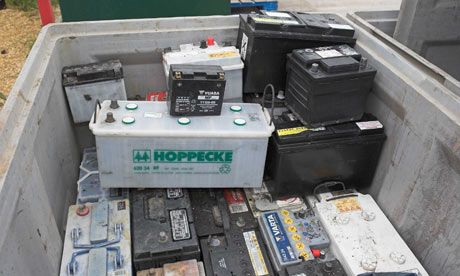 This makes SLA batteries a sustainable industry that is very environmentally friendly. In addition, because of the closed loop of battery manufacture and recycling, the cost of SLA batteries is lower than other types of batteries.
This makes SLA batteries a sustainable industry that is very environmentally friendly. In addition, because of the closed loop of battery manufacture and recycling, the cost of SLA batteries is lower than other types of batteries.
Just about any place that sells SLA batteries will accept old ones for recycling. Many big box stores will also accept them.
All of the BatteryClerk global websites have details on where to send your batteries. Oklahoma City in the United States, Ottawa in Canada, and The Netherlands for the EU will all accept used batteries. Check our recycling pages for more details.
DELTA HR series batteries are highly efficient batteries and work well in cyclic mode.
The DELTA factory is located in China and is characterized by the quality and stability of the discharge characteristics of the produced batteries.
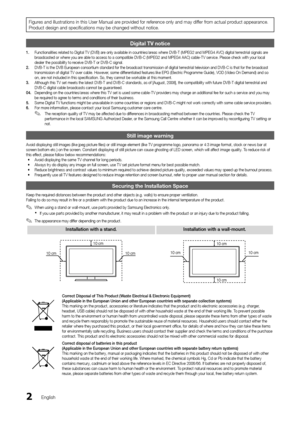
Optimal, we consider this battery according to the "price-quality" criterion. You should not expect a long service life from her, as a rule it is a season or two.
We wish your children a comfortable ride! And in order for the new battery to serve you as long as possible, be sure to read and follow the operating instructions.
General: You purchase a battery using technology AGM - this means:

Before purchase:
New battery:

Installing a battery on a children's motorcycle:

Operation test and operating rules:
 Let's say 500mA is indicated there, the capacity of the new battery, for example 6Ah, 6 divide by 0.5 = 12 Bottom line: the time to fully charge the battery is 12 hours!
Let's say 500mA is indicated there, the capacity of the new battery, for example 6Ah, 6 divide by 0.5 = 12 Bottom line: the time to fully charge the battery is 12 hours! Battery charge. The most important point in the rules.


Seasonal battery storage.
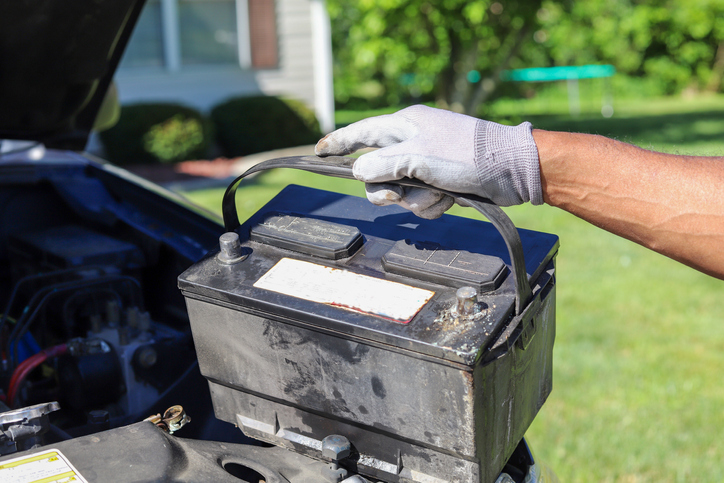 Store the battery in a dry place away from direct sunlight, at temperatures between 0°C and 25°C.
Store the battery in a dry place away from direct sunlight, at temperatures between 0°C and 25°C. THE WARRANTY FOR THE BATTERY IS NOT COVERED IN THE FOLLOWING CASES:
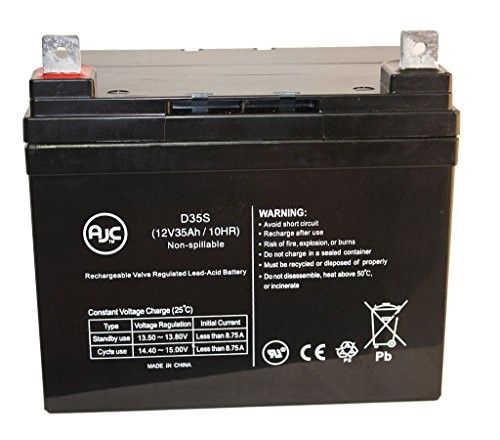
BATTERY DISPOSAL : A failed battery must be taken to a waste battery collection point for recycling. If you follow the rules of operation and maintenance, your battery will last more than one season.
| Basic | |
|---|---|
| Short description | Battery DELTA HR6-12, 6V, 12Ah (6V, 12ah) 151x50x94+6, 1.94kg |
| Item model | HR 6-12 |
| Name | HR 6-12 |
| Manufacturer | Delta |
| Country | China |
| Electrical characteristics of the battery | |
| Voltage, V | 6 |
| Capacity, Ah | 12 |
| Energy efficiency | HR increased energy efficiency |
| technology | AGM |
Form factor (size), terminals, weight.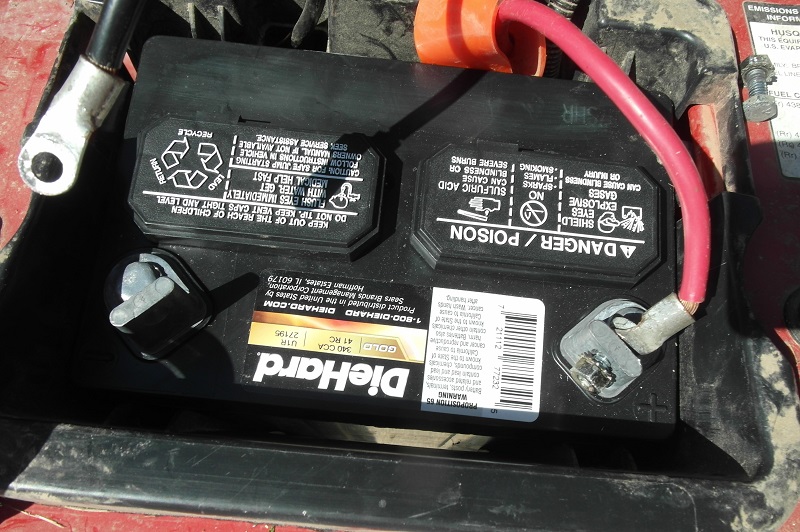 | |
| Length, mm | 151 m |
| Width, mm | 50 m |
| Height, mm | 94 m |
| Height with terminal, mm | 100 |
| Terminal type | F1: FASTON 5mm |
| Weight kg | 2 kg |
| Pack quantity | ten |
| Standard type-size | 6 volts 10-16 Ah: 151x50x100 (LxWxH), mm |
| Operating characteristics | |
| Service life in buffer mode, years | 5 |
Cycle life, no. charge discharge charge discharge | 260 |
| Warranty, months | 12 |
| Product category | Optimum |
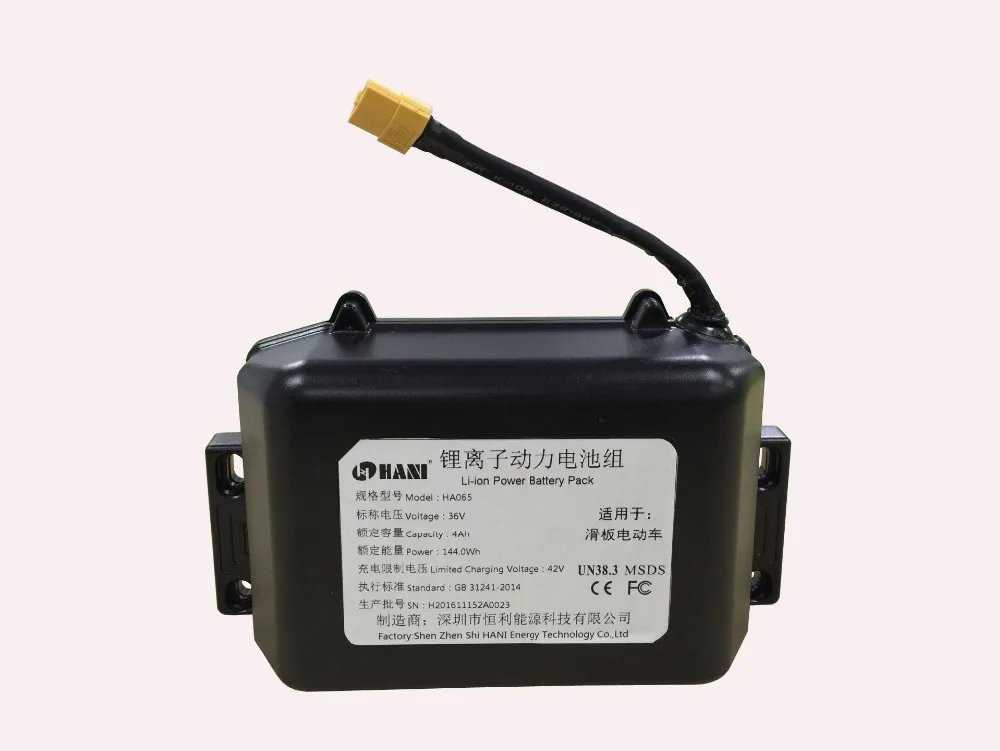 7 KB)
7 KB) no matter what high -quality and expensive was your battery, one day she will be asked to "rest." How do you know that her last hour is on the way and, if possible, postpone an expensive purchase? About the intricacies of car batteries - in the review of the portal "AvtoVzglyad".
Eduard Raskin
A battery is a battery wherever you put it. One day the charge in it runs out, and the car, sadly blinking its lights goodbye, "turns into a pumpkin." To prevent this from happening, on the dashboard of some cars you can still find the appropriate scale showing the status of the battery. And if there is no such device, because many automakers consider the multimeter an anachronism and left only a red icon indicating a full discharge. How to find out about the imminent death of the main car battery in advance?
First of all, it is worth understanding the theory.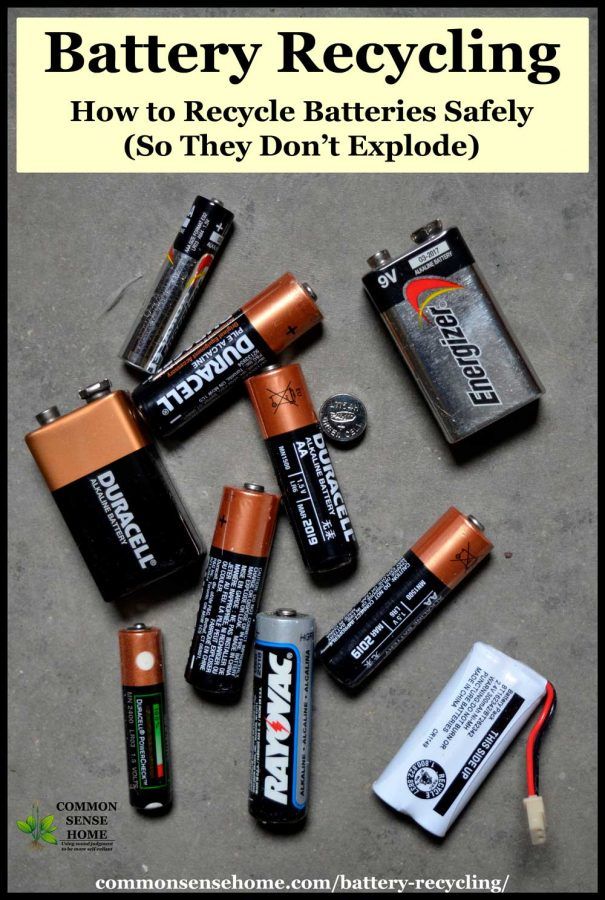 Let's talk about the most common, "acid" batteries, which the car is equipped with at the factory. As a rule, high-quality batteries are installed on conveyors, the composition of the plates of which includes a lot of lead, as well as precious metals, which can significantly increase the service life. But sooner or later, the same fate awaits them: sulfation, which will lead to battery failure. During a chemical reaction, lead sulfate is formed inside the device, which eventually completely covers the plates, preventing the battery from working. The more the battery is discharged, the faster it will become unusable. A couple of full discharges will be enough to finish off the battery. It is from this point that the battery life directly follows.
Let's talk about the most common, "acid" batteries, which the car is equipped with at the factory. As a rule, high-quality batteries are installed on conveyors, the composition of the plates of which includes a lot of lead, as well as precious metals, which can significantly increase the service life. But sooner or later, the same fate awaits them: sulfation, which will lead to battery failure. During a chemical reaction, lead sulfate is formed inside the device, which eventually completely covers the plates, preventing the battery from working. The more the battery is discharged, the faster it will become unusable. A couple of full discharges will be enough to finish off the battery. It is from this point that the battery life directly follows.
The more often the battery is strongly discharged, the less it lives. Such a discharge occurs for a number of reasons: short runs and cold weather, incorrect operation of the generator and poor contact at the terminals. When starting the engine in cold weather, the battery spends a lot of energy, but in Russia they still heat cars, so the battery has time to charge even at a short distance. But with the operation of the systems, you need to keep your eyes open: carefully monitor the oxides and plaque on the terminals, regularly carrying out the cleaning and processing procedure. The generator of liberties in relation to itself will not be allowed at all - the slightest malfunction will immediately lead to a “visit” to an electrician.
But with the operation of the systems, you need to keep your eyes open: carefully monitor the oxides and plaque on the terminals, regularly carrying out the cleaning and processing procedure. The generator of liberties in relation to itself will not be allowed at all - the slightest malfunction will immediately lead to a “visit” to an electrician.
The saddest thing that can happen is a sudden battery failure. Note that preventive actions will not help here: even a freshly purchased battery in some cases can “do it with a pen”. Self-defense on the part of the driver lies in constant monitoring: filling in the “anti-freeze” or pulling out the oil dipstick, do not forget to take a minute to the battery. Many car batteries have a built-in charge indicator: a round window that professionals call a hydrometer. If the green float inside is clearly visible, then everything is in order with the battery, the charge is normal. If the "green signal" is only guessed, then the battery capacity is reduced, but still remains sufficient to start the engine. In the case when nothing is visible or an additional red float has surfaced - it's tobacco, you have to go to the store. On foot.
In the case when nothing is visible or an additional red float has surfaced - it's tobacco, you have to go to the store. On foot.
142644
Photo avtovzglyad.ru
The second method is already based on experience and attentiveness: if the car starts harder usually, you have to “turn” the starter longer or the headlights start to “wink” - it's time to think. The next start of the engine may not happen.
A quality battery from a trusted brand can last at least five to six years, and with proper operation and due attention - up to 8 years. It’s worth starting with a choice: everyone has heard about the priest and cheapness, but few have heard about warranty periods. If the manufacturer guarantees 3 years, he is confident in his product. Less is a lot to think about. If the warranty card has a period of 6 months, you should completely postpone the purchase. A good battery can be seen from afar: a well-known manufacturer, high quality workmanship and the same high price.